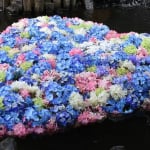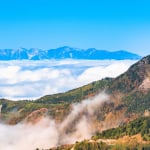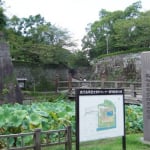Name: Saga Castle History Museum
Address: 2-18-1 Jonai, Saga City, Saga Prefecture
Official Website: https://saga-museum.jp/sagajou/
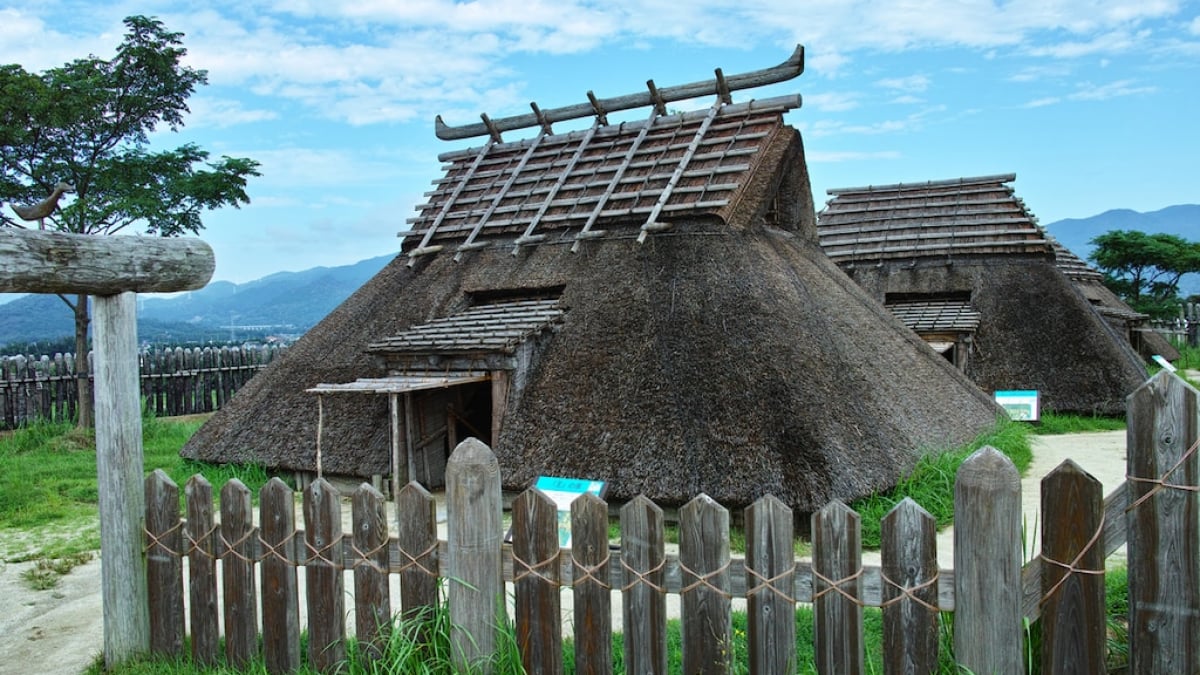
Unraveling the History of Saga! Introducing 13 Recommended Historical Tourist Spots
Saga Prefecture is home to many historical sites, including the Yoshinogari Ruins, which appear in textbooks, and Karatsu Castle, a symbol of the prefecture's development. There are also history museums that tell the story of Saga Castle, which once stood in this area, as well as museums where you can learn about the history of Saga Prefecture. With so many must-see spots, we have carefully selected and will introduce 13 recommended historical sites you should visit in Saga Prefecture.
table of contents
[x] close
Unraveling the History of Saga! Introducing 13 Recommended Historical Tourist Spots
- 1. Saga Castle History Museum
- 2. Karatsu Castle
- 3. Saga Prefectural Museum & Saga Prefectural Art Museum
- 4. Saga City History and Folklore Museum
- 5. Oofuchi & Meobuchi Park
- 6. Yoshinogari Historical Park
- 7. Houtou Shrine
- 8. Tsuru no Iwaya (Crane's Cave)
- 9. Koudenji Temple
- 10. Inasa Shrine
- 11. Seiganji Temple & 500 Rakan Statues
- 12. Furuyu Onsen
- 13. Saga Shrine
- ◎ Summary
1. Saga Castle History Museum
Saga Castle, completed in the early Edo period as the residence of the Nabeshima clan of the Saga Domain, features Shachi-no-mon Gate and Tsuzuki-yagura Tower, both designated as Important Cultural Properties of Japan. The entire castle site is a historic landmark of Saga Prefecture. The Saga Castle Honmaru Palace has been fully reconstructed as the largest wooden reproduction of its kind.
At the Saga Castle History Museum, visitors can learn about the history of the area and experience the 45-meter tatami-matted corridor and the grand hall with 320 tatami mats, where people once lived during that era.
Additionally, visitors can enjoy virtual experiences, lift a cannonball, listen to the voice of historical figure Shigenobu Okuma through a phone, and take part in quizzes and games in an information corner designed like a traditional Terakoya (temple school). Built as a source of pride for the local people, this museum serves as a hub for community exchange and activities, allowing visitors to experience a part of Saga’s history.
2. Karatsu Castle
Known as Maizuru Castle (Dancing Crane Castle) and also called Umi-shiro (Sea Castle), Karatsu Castle is famous for its towering stone walls by the sea. Built in 1608, the castle changed hands among different rulers, including the Terasawa, Doi, Mizuno, and Ogasawara clans. Today, the castle remains as a reconstructed site with a replica keep, restored towers, gates, and stone walls.
Visitors can explore the interiors and learn about the history of Saga Prefecture from the Sengoku period to the Meiji era. The castle keep also offers breathtaking views, including Niji-no-Matsubara (Rainbow Pine Forest). It is a perfect place to enjoy both history and nature.
During spring, cherry blossoms and wisteria bloom around the castle, creating a picturesque scene that feels like stepping back in time. Karatsu Castle also features a permanent exhibition about the Edo-era castle town and the history of the Karatsu Domain, as well as special temporary exhibits. It is a must-visit spot where visitors can appreciate the castle both from the outside and inside.
Name: Karatsu Castle
Address: 8-1 Higashi-Jonai, Karatsu City, Saga Prefecture
Official Website: http://www.karatsu-bunka.or.jp/shiro.html
3. Saga Prefectural Museum & Saga Prefectural Art Museum
Established in 1970 as part of the 100th Anniversary of the Meiji Era, the Saga Prefectural Museum collects and researches a wide range of materials, including natural history, archaeology, history, fine arts, crafts, and ethnology. Its permanent exhibition introduces the history and culture of Saga Prefecture and is used as an educational resource for local children.
Thirteen years later, the Saga Prefectural Art Museum was built as part of the 100th Anniversary of the Saga Prefectural Government, standing alongside the museum. The art museum collects and exhibits contemporary paintings, sculptures, crafts, and calligraphy related to the region, further spreading Saga’s cultural heritage.
Hidden between these two buildings is the Seikeian Tea Room, completed on October 10, 1973. It was donated by Mrs. Yukie Ichimura in honor of the late Kiyoshi Ichimura’s wishes. Today, it is used not only for tea ceremonies but also for training in traditional Japanese tea culture.
These three buildings together serve as essential sites for preserving and showcasing the history and culture of Saga Prefecture.
Name: Saga Prefectural Museum & Saga Prefectural Art Museum
Address: 1-15-23 Jonai, Saga City, Saga Prefecture
Official Website: https://saga-museum.jp/museum/
4. Saga City History and Folklore Museum
The Saga City History and Folklore Museum includes historical buildings such as the former Nagamori Residence and former Hisadomi Residence, both registered as Saga Heritage Sites. It first opened in 1997 with the former Koga Bank, former Koga Residence, and former Ushijima Residence. Later, in 2000, the former Sansei Bank and former Fukuda Residence were added, followed by the former Nagamori Residence and former Hisadomi Residence in 2015, making it a complex of seven buildings showcasing Saga Prefecture's history.
These buildings are open to the public for free and serve as venues for events, concerts, and exhibitions. The Western-style architecture of the former Koga Bank and former Koga Residence, built in the Taisho era, is particularly notable. The former Ushijima Residence is a reconstructed version of Saga’s oldest townhouse, while the former Sansei Bank, built in the early Meiji period, and the former Fukuda Residence, an advanced Japanese-style building from the Taisho era, are also popular among visitors.
The upcoming former Morinaga Residence, known for its transition from a tobacco manufacturer to a kimono store, and the former Hisadomi Residence, recognized for its shoemaking workshop, provide valuable insights into the daily life of Saga’s past.
Name: Saga City History and Folklore Museum
Address: 2-9 Yanagi-machi, Saga City, Saga Prefecture
Official Website: http://sagarekimin.jimdo.com/
5. Oofuchi & Meobuchi Park
Nestled between the historic Furuyu Onsen and Kumanokawa Onsen, Oofuchi & Meobuchi Park is a natural park located along the Kase River. Stepping into this park, visitors can witness gigantic rock formations shaped over centuries by natural forces, accompanied by the soothing sound of the river’s clear stream. It is the perfect spot to experience Saga’s natural history, with walking trails and bridges allowing visitors to immerse themselves in the beauty of the surroundings.
This lush natural gorge offers scenic landscapes reminiscent of ancient Japanese folklore, making it a great place to escape from the hustle of everyday life. Families can also enjoy leisurely walks and picnics, making it an ideal recreation spot for all ages. With changing views throughout the four seasons, Oofuchi & Meobuchi Park is a place where visitors can truly experience the breath of nature.
Name: Oofuchi & Meobuchi Park
Address: Kamikumagawa & Kosogawa, Fuji Town, Saga City, Saga Prefecture
Official Website: https://www.city.saga.lg.jp/main/871.html
6. Yoshinogari Historical Park
The Yoshinogari Ruins, featured in Japanese history textbooks, date back to the 5th to 3rd century BCE during the Yayoi period. While Japan has many archaeological sites, Yoshinogari Historical Park is the largest Yayoi-period settlement, spanning three towns in Saga Prefecture. It offers a glimpse into an ancient nation-like community and showcases 700 years of Yayoi period evolution. Many artifacts, including bronze swords with handles and glass beads, have been excavated and designated as Important Cultural Properties of Japan.
Visitors can explore ancient cemeteries, moats, ruling-class residences, ceremonial sites, royal tombs, markets, storage facilities, and commoners’ dwellings, all preserved to this day. The park also serves as a gateway to understanding ancient Japanese agriculture and plant life through excavated relics.
In December, a special illumination event takes place, offering an immersive experience for children and adults alike through hands-on activities and educational exhibits. Whether you're a history enthusiast or just looking for an engaging cultural experience, Yoshinogari Historical Park is a must-visit destination.
Name: Yoshinogari Historical Park
Address: 1843 Tade, Yoshinogari Town, Kanzaki District, Saga Prefecture
Official Website: http://www.yoshinogari.jp/
7. Houtou Shrine
With the auspicious name Houtou (Treasure Luck) Shrine, this site is a well-known power spot where lottery winners have reportedly prayed. However, it is also a historic shrine. Annually, 200,000 visitors come to pay their respects at Houtou Shrine, which enshrines Tsunayoshi Nozaki, a samurai born in 1554 who served Sorin Otomo of Shinshu. He was praised as a talented and righteous warrior with great courage and strength.
Tsunayoshi fled to Takahima Island after being pursued by old retainers, and there, he fought and defeated criminals terrorizing the island. Despite suffering severe injuries, he spared the lives of five survivors, guiding them onto a better path. Though he passed away at just 32 years old, the islanders honored him with a grand burial. In gratitude for the prosperity brought by salt production, they built Houtou Shrine and dedicated a stone torii gate.
Name: Houtou Shrine
Address: 523 Takashima, Karatsu City, Saga Prefecture
Official Website: http://houtoujinja.jp/
8. Tsuru no Iwaya (Crane's Cave)
A unique historical site in Karatsu, Tsuru no Iwaya is located on the western edge of the city. It is easy to find due to a landmark stone monument known as Nianchan no Sato. Upon entering the temple surrounded by mountains, visitors can enjoy a breathtaking view, but further inside, two caves can be explored. The left cave houses Taga Daimyojin, while the right cave features stone stairs.
On the left cave’s stone walls, five Buddha carvings are engraved, with a monument continuously adorned with fresh flowers standing in front. On the right cave’s side, a statue of Kobo Daishi (Kukai) is believed to be enshrined.
The site was once a major resting place for migratory birds, inspiring a monk 500 years ago to carve images of cranes and turtles as symbols of longevity and blessings. Today, 120 Buddha statues are carved within the cave, making it a spiritual site where many visitors come to pray.
Name: Tsuru no Iwaya
Address: Tsurumaki, Hizen Town, Karatsu City, Saga Prefecture
Official Website: http://kazesasou.com/hotoke/saga/_187_karatu_turunoiwaya.html
9. Koudenji Temple
Famous for housing Japan’s largest Nirvana Painting (Dai Nehanzu), Koudenji Temple is also well known for its 700 plum trees that bloom spectacularly. With over 1,000 years of history, the temple has connections to the Nabeshima and Ryuzoji clans, and historical research is ongoing.
The temple enshrines Yakushi Nyorai (Medicine Buddha), believed to be a creation of Ennin, a famous monk from the Heian period. The Dai Nehanzu is one of only two in Japan and is publicly displayed only during special openings of the Buddha Hall. Measuring 15.2 meters tall and 6 meters wide, it is a replica of the one originally painted by Myoucho of Kyoto’s Tofukuji Temple. Thanks to the efforts of Kyoto painter Risazaemon Wakai, the artwork has been meticulously preserved for over 300 years and remains a treasured object of worship.
Name: Koudenji Temple
Address: 1112-1 Honjo, Honjo Town, Saga City, Saga Prefecture
Official Website: http://www.koudenji.com/
10. Inasa Shrine
Located 200 meters south-southwest of Inasayama Sports Park, Inasa Shrine has protected the Higashishiroishi region of Kishima District for centuries. It is mentioned in the Nihon Shoki (Chronicles of Japan), with legends stating that Itakeru-no-Mikoto, along with Ooyatsuhime-no-Mikoto and Tsumasuhime-no-Mikoto, descended from the heavens and planted cedar and maki trees on Inasayama Mountain.
During the reign of Emperor Suiko, Prince Asa of Baekje settled in this area and built shrines dedicated to his father and mother. After his death, the villagers enshrined all three figures together. Later, in 806 AD, Kukai (Kobo Daishi) restored the shrine, establishing Inasa Taihei-ji Temple, and enshrined Inasa Daimyojin as the guardian deity, turning it into a sacred site.
With origins dating back to the birth of Japan, Inasa Shrine is one of the oldest in the country, referenced in ancient documents from the time of Prince Shotoku. Visitors can explore the historical stone torii gates, steep stone steps, and the legendary footprint of a guardian deity.
Name: Inasa Shrine
Address: 2925 Heta, Shiroishi Town, Kishima District, Saga Prefecture
Official Website: http://www.town.shiroishi.lg.jp/asobou/ittokanba/_2137.html
11. Seiganji Temple & 500 Rakan Statues
For those who love Buddhist sculptures, Seiganji Temple’s 500 Rakan Statues are a must-see. The temple, belonging to the Obaku sect, is the ancestral temple of the Ogi Nabeshima family. Since new temple constructions were prohibited at the time, it was built on the site of the former Keifukuji Temple as a branch of Entsuji Temple.
The 500 Rakan statues, each with a unique facial expression, create a powerful impression on visitors. However, only about 200 remain today. While the exact origins are unknown, legends suggest they were carved in the mid-Edo period by stone mason Tokubei Hirakawa and his family from Nishikawa, Sato.
Seiganji Temple is surrounded by bamboo groves, making it especially breathtaking during autumn foliage season. Walking along the 2km mountain trail, visitors can enjoy various other temples, culminating in the Nabeshima family graveyard at the end.
Name: Seiganji Temple & 500 Rakan Statues
Address: Hatada Saginowara, Ogi Town, Ogi City, Saga Prefecture
Official Website: https://www.city.ogi.lg.jp/main/6277.html
12. Furuyu Onsen
The history of Furuyu Onsen dates back to the Qin Dynasty of China. According to legend, Xu Fu, sent by Emperor Qin Shi Huang, arrived in this area and lived peacefully on Mount Kiyomine. One day, the spirit of the hot spring deity appeared to him in a golden aura, revealing the hidden thermal waters near Okinagaya River.
Though a major earthquake during the Genroku era buried the hot spring, it was rediscovered 88 years later by a villager from Furuyu. The waters are famous for their healing properties, said to cure wounds almost instantly. The area also includes Crane Spirit Onsen, Eiryu Spring, Yakushi Nyorai Spring, and Xu Fu Spring, each with its own significance.
Name: Furuyu Onsen
Address: 2685 Furuyu, Fuji Town, Saga City, Saga Prefecture
Official Website: http://www.fuji-spa.com/
13. Saga Shrine
Known as the first shrine of the Eight-Shrine Pilgrimage, Saga Shrine enshrines Nabeshima Naomasa, the 10th lord of the Saga Domain, and Nabeshima Naotada, the 11th lord of the Saga Domain. It is revered as a shrine for the common people.
Naomasa, seeing the financial difficulties of the Saga Domain, adopted the suggestions of scholar Koga Kokudo and implemented frugality policies. He personally practiced austerity and banned luxury and extravagant entertainment. Instead of maintaining his multiple villas, he opened some of them as public spaces for cherry blossom viewing.
As a result, Nabeshima Naomasa became known as a protector of the people. His grandson, Nabeshima Naonobu, later opened Kouno Park in 1923, turning a former tea house into a public park. Naomasa was also revered for his economic reforms, including postponing tax collection, redistributing confiscated lands to tenant farmers, and capping interest rates at 12% to prevent exploitation. Due to these contributions, he is honored as a god of agriculture and economic recovery. Additionally, as he greatly valued education and talent development, he is also worshipped as a god of learning.
Name: Saga Shrine
Address: 2-10-43 Matsubara, Saga City, Saga Prefecture
Official Website: http://www.sagajinjya.jp/
◎ Summary
Saga Prefecture is home to historical sites that have shaped Japan, making it a fascinating place for history enthusiasts. Some sites can be easily accessed by car, while others require walking, but there are also hot spring resorts perfect for relaxation. Whether exploring historic castles, shrines, temples, or nature spots, these places offer a glimpse into Japan’s rich past. Be sure to use this guide as a reference when planning your trip!
RELATED ARTICLES
REGIONS
CATEGORIES
FEATURED ON travel
-
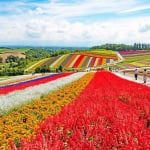
Where will you go for the summer vacation? Introducing recommended spots for domestic travel
-
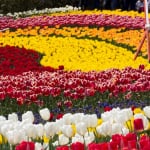
Kaizu City’s Recommended 7 Tourist Spots. Enjoy the Culture and History Nurtured by Wajū!
-
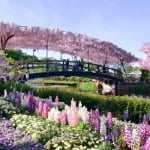
What Makes Ashikaga Flower Park So Special? A Treasure Trove of Photo-Worthy Spots!
-
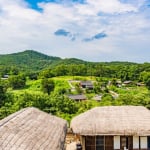
600 Years of Radiant Tradition: Korea’s Historic Villages of Hahoe and Yangdong
-
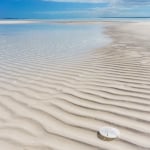
Two-Colored Seas and a Pink Beach! 4 Must-Visit Spots in North Eleuthera
MOST POPULAR ON travel
-
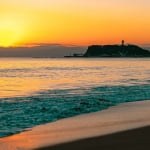 1
1[Kamakura/Sea] 5 beaches and sunset spots!
-
 2
2Not Just Lake Biwa! 60 Recommended Sightseeing Spots in Shiga Prefecture, from Classics to Hidden Gems
-
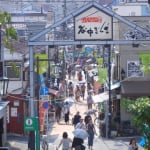 3
3Explore Nippori: 8 Must-Visit Popular Spots to Check Out Before You Go
-
 4
4[SLAM DUNK] Where Is the Railroad Crossing? Here’s the Famous Crossing in Front of Kamakura High School on the Enoden Line!
-
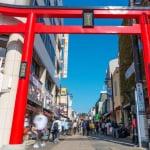 5
5A popular tourist spot in Kamakura! Introducing recommended shops on Komachi-dori Street

